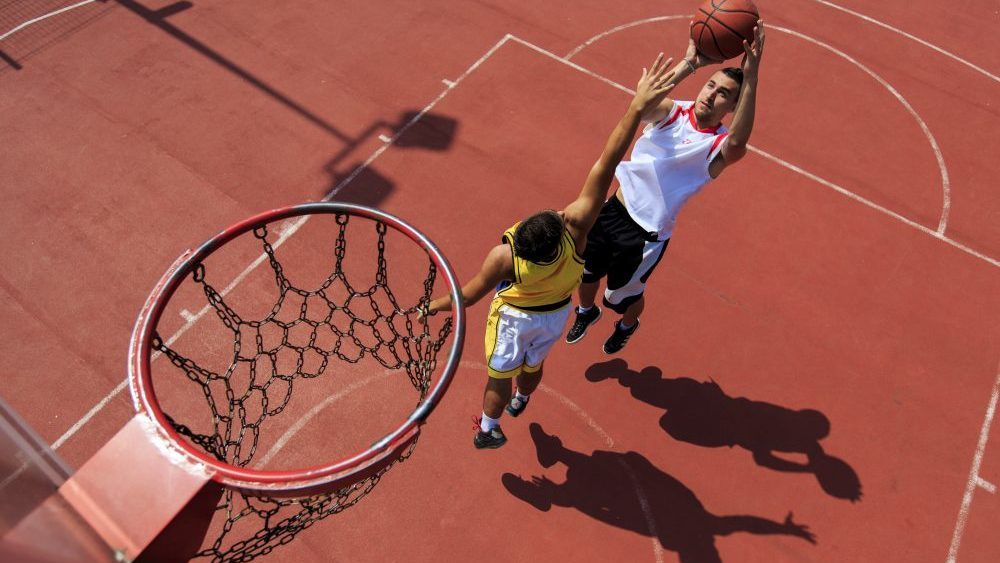Home sports courts provide great fun and exercise, but are they a wise investment? While the kids may overwhelmingly approve, a future buyer may not agree. Here’s a quick play-by-play of what’s involved, how much it will cost and the return on investment.
Types of courts. The most common types of courts are for basketball and tennis. Some courts double for both, with a basketball goal on the side and markings for both sports. Such courts can also be used for volleyball, badminton, shuffleboard and hockey.
Surfaces. A court’s foundation can be made of asphalt, concrete or compacted material such as fragmented concrete. A sports modular surface can be laid upon these foundations. Asphalt has less durability and will need repairs more often. Concrete will last many decades. Both of these surfaces require heavy equipment for installation and both create a barrier preventing rainwater from reaching the ground beneath, resulting in standing puddles. Removal would be difficult. Compacted material requires less in the way of equipment and is permeable.
A modular sports surface laid on top of concrete, asphalt or compacted material will absorb shock and minimize injuries, particularly when placed upon compacted material. It is portable should you decide to remove it from the base.
Space requirements. The space for a home court must be big enough for the court itself — plus adequate buffer between your property and the neighbors. Check your deed restrictions. You also don’t want to crowd the house, deck or patio. The land should be level.
Landscaping changes. Consider how the sports court will alter your landscaping and drainage. Will you have to remove trees to install the court? Not only will this add to your costs, but also consider the loss of shade to the area and the aesthetic value sacrificed.
How will a court alter the flow of drainage from rain and irrigation runoff? Check with your local government officials about rules and regulations concerning water runoff. Many local governments require a certain percentage of the land to be permeable.
Finally, the space must be accessible to installation crews with earth-moving equipment. If the area is fenced, this may require temporary removal of fence panels.
Seek approvals. Seek the proper permits from local authorities and your homeowners association, if you have one. A detailed design plan will likely be required along with permitting fees.
Cost. On the low end, a simple half basketball court starts at $7,000. On the upper end, a multi-use court big enough for tennis, will cost tens of thousands of dollars.
Pros and cons. A sports court would no doubt encourage your children to become active outdoors and be a drawing card for friends and neighbors. It also would be a great convenience for athletes in the family needing extra training time. But it’s also important to think about how the courts will affect your neighbors. Will they be bothered by the noise? Will the drainage or aesthetics of their property be compromised? And what about the age of your children? Will you use the courts after your kids are grown and gone? And finally, how would a sports court influence the resale value of your home? You would likely get less than a 50 percent return on your investment — and it might even hinder a sale. Similar to a pool, a home sports court would limit your home’s appeal to a narrow subset of buyers. If a buyer wanted it removed, the cost could be a deal killer.


